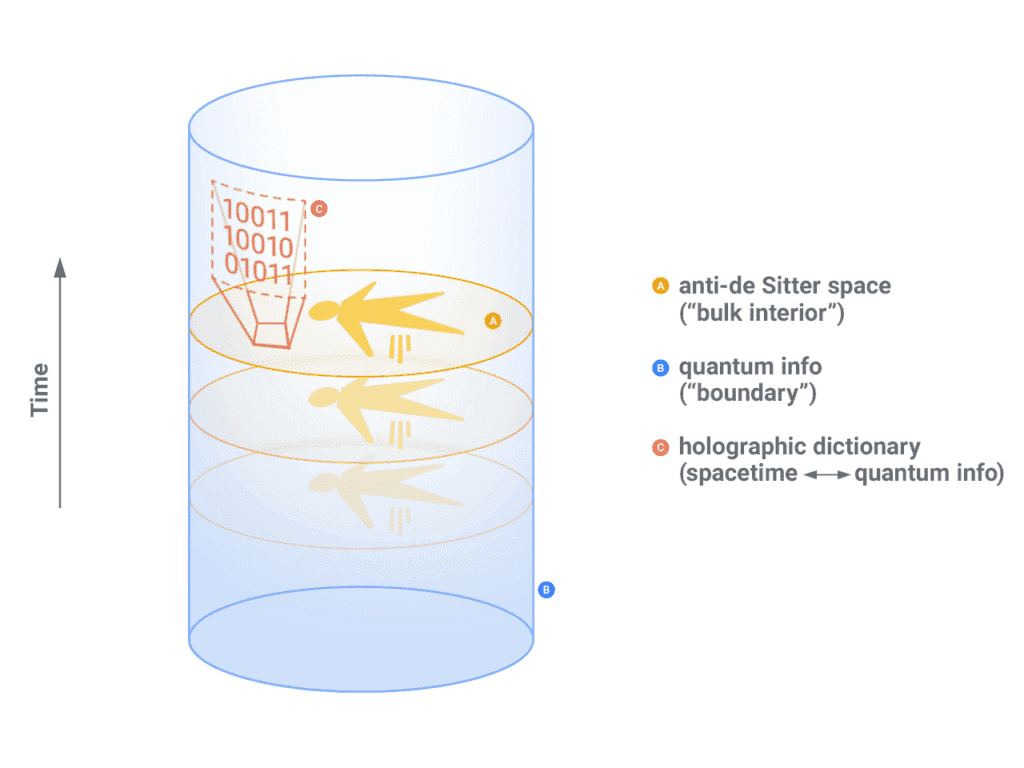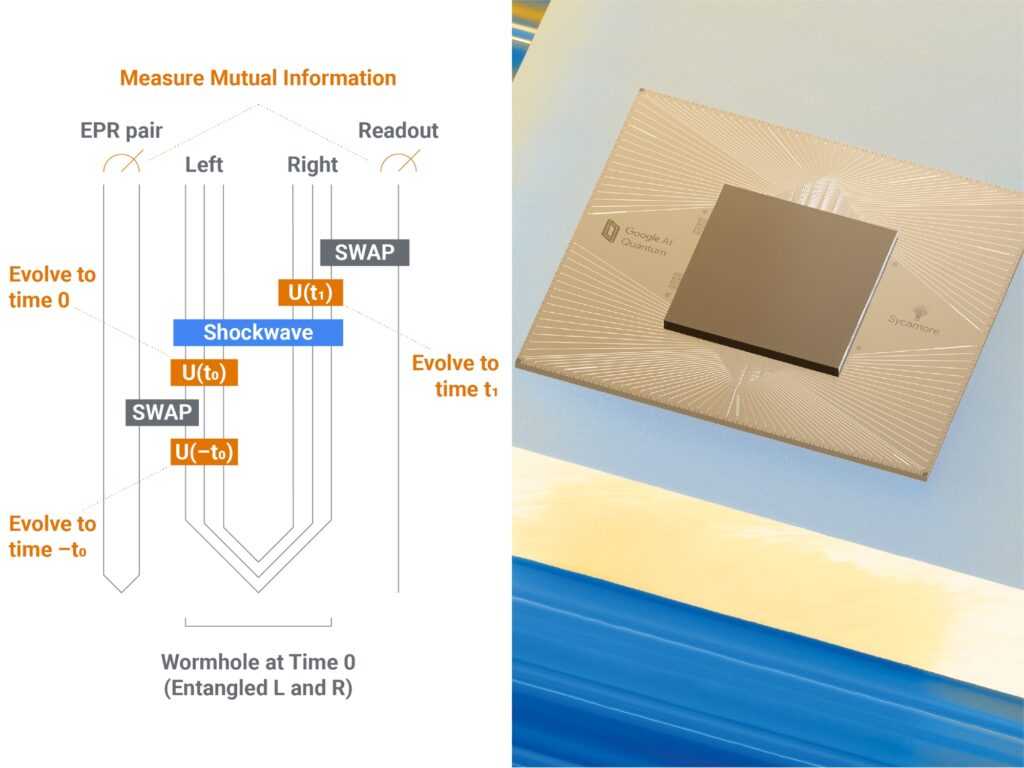Scientists at Google Create a Working Quantum Wormhole
By Laura Cowan
Laura K. Cowan is a tech, business, and wellness journalist and fantasy author whose work has focused on promoting sustainability initiatives and helping individuals find a sense of connection with the natural world.
Schematic representation of anti-de Sitter space (interior of cylinder) and its dual representation as quantum information on the boundary (surface of cylinder). Image courtesy Google/Alphabet.
Researchers have observed wormhole dynamics on a quantum device at Alphabet’s Google called the Sycamore quantum processor, and appear to have created a real miniature wormhole capable of transporting data. But don't get out your tin hats just yet.
“There’s a difference between something being possible in principle and possible in reality,” said physicist and co-author of a new study on wormholes, Joseph Lykken of Fermilab (the U.S. particle physics and accelerator laboratory). “So don’t hold your breath about sending your dog through the wormhole. But you have to start somewhere. And I think to me it’s just exciting that we’re able to get our hands on this at all.”
A wormhole, or a rupture in space-time is long held the holy grail of physics, a possible way to bridge enormous distances between remote areas of space across our vast universe. It could open the door to interstellar travel, possibly even time travel by some accounts, though they remain controversial.
Wormholes are consistent with Einstein’s theory of general relativity, which focuses on gravity as one of the fundamental forces in our universe.
Left: Quantum circuit describing a traversable wormhole. A maximally entangled pair of qubits (“EPR pair”) are used as an entanglement probe to send a qubit through the wormhole. The qubit is swapped into the left side of the wormhole at time –t0; the energy shockwave is applied at time 0; and the right side of the wormhole is measured at time t1. Right: Photograph of the Google Sycamore quantum processor. Image courtesy Google/Alphabet.
This was a “baby wormhole,” Caltech physicist Maria Spiropulu explained during a video briefing with reporters. Spiropulu is co-author of this research published in the journal Nature.
But that doesn't mean scientists are ready to send humans or living animals through. “Experimentally, for me, I will tell you that it’s very, very far away. People come to me and they ask me, ‘Can you put your dog in the wormhole?’ So, no,” Spiropulu told the press during a video briefing on this experiment. “That’s a huge leap.”
So what is it, exactly? The researchers say they found a quantum system that exhibits key properties of a gravitational wormhole but that was small enough to implement on quantum hardware. So, call it simulated, but it follows the expected laws of physics and did in fact appear to create the conditions of a real workable wormhole. No rupture of space-time was created in physical space in this experiment, but a traversable wormhole appeared to have emerged based on quantum information that was teleported through the Einstein-Rosen bridge using quantum codes on the quantum processor.
“It looks like a duck, it walks like a duck, it quacks like a duck. So that’s what we can say at this point – that we have something that in terms of the properties we look at, it looks like a wormhole,” Lykken said.
You can read more about the experiment on the Google AI blog.
caltech, einstein rosen bridge, fermilab, google, nature, quantum wormhole, working wormhole


